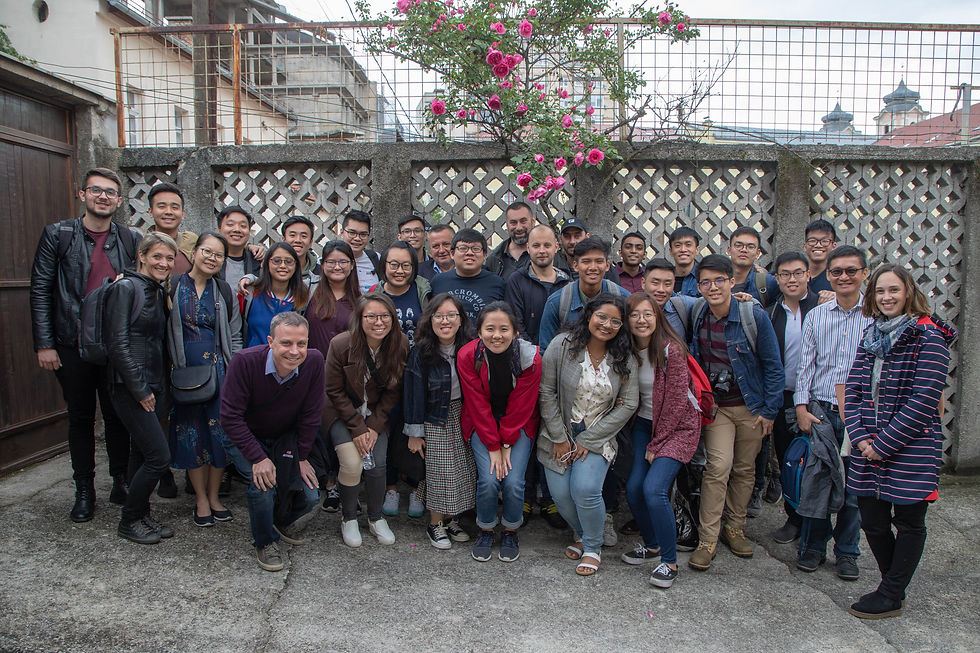NGOs and Businesses (Part 1)
- Tiffany Tan
- Jun 10, 2019
- 3 min read
Having looked at state and populace attitudes towards external actors, I would now tap on Jonathan Rowson’s ideas about social change in understanding reconciliation and economic development efforts amidst the many external regional influences.
Rowson believes that social change occurs not just top-down, but also bottom-up, side-to-side and inside-out (Rowson, 2014). In my sharing about NGOs (Part 1) and businesses (Part 2), I will be looking at the viability of each approach and sharing my views about the future of the region.
Nansen Dialogue Centre (NDC)

NDC is a Norwegian reconciliation project promoting conversation between Serbs, Croats and Bosniaks since 1994. While learning about their cause, we found their project lacked funding, and even almost collapsed in 2015 when Norway cut their funding. When asked about state-funding, NDC Mostar’s Director Elvir Đuliman spoke resignedly about the hopelessness of state funding, given that its aims contradict the state’s whose power is entrenched by the very division NDC advocates against.
The absence of state-support reveals a mismatch of interests between the state and NDC, making it difficult for social movements like these to rise in prominence. When the state is unwilling to tap on foreign-initiatives like these to promote reconciliation, it suggests the unviability of a top-down approach towards social change relating to reconciliation. Will ground-up initiatives be more viable then?
United World College (UWC)

Afterwards, we visited UWC Mostar, an international school cultivating social innovators for a peaceful and sustainable future. It prides itself as Bosnia’s only multi-ethnic school.
Historically, Southeast Asian leaders such as Ho Chi Minh, Lee Kuan Yew and Sukarno relied on Western education to lead and unite their countries under the banner of nationalism. While UWC shares the same prospects, it was shocking how only three students returned after graduating. A local merchant later revealed that their people view UWC only as a means to migrate, rather than to cultivate individuals capable of effecting ground-up, transformative changes back in Bosnia. Although Mostar is branded by UWC as the “Jewel of the Movement”, we also found its programmes elitist and fairly detached from the common people, and thus a mismatch with the populace’s needs. The absence of local leaders advocating ground-up change forces us to look at other approaches of social change. How about the inside-out?
Catholic Relief Services (CRS)

The inside-out approach to social change is a neglected form of social change that deals with psychological, spiritual and cultural change among the population. Examples of inside-out change in history include Japan’s transformative culture leading to its economic miracle in the 1950s, and how Germany coped with and confronted their WWII atrocities on a national level. Is an inside-out change then, possible for the region?
We visited CRS to hear from juvenile fighters their war experience and how they coped post-war. The CRS is a US-based Catholic humanitarian agency, and its priorities in Sarajevo include rehabilitation and reconciliation through dialogue.
It was then that I noted a trend between NDC and CRS, that these dialogues are heavily controlled, scaled down and cautiously-planned. For instance, NDC had to consciously scale-down their project to avoid sounding “too political” to appeal to the populace. CRS similarly declined to have war survivor Hasan Nuhanović join the sharing, fearing that his opinions may be too traumatic or politicised for the war veterans (one of them relied on medication to cope with his PTSD).

While CRS believes that these dialogues have been “ice-breaking” in helping people de-demonise one another, the fact remains that they are deliberately kept small because of personal and political sensitivities of the issue. When asked about the strength of these dialogues, Political Science students from the University of Sarajevo were aware of CRS but feedbacked that its influence was limited because people simply avoided the sensitive issue.
Ultimately, the mismatch between external NGOs’ need to scale up and the populace’s resistance towards and sensitivity of the issue is what keeps potentially inside-out movements like these from rising up to prominence and resonating with the populace. While external benefactors like NDC, UWC and CRS have great intentions, the lack of top-down support, prominent bottom-up initiatives and the sensitivity behind an inside-out approach explains why external NGOs have had limited influence in shaping reconciliation efforts. In Part 2, we attempt to examine a more successful side-to-side approach for social change among businesses.
References
Rowson, J. (2014). Top Down, Bottom Up, Side to Side, Inside Out: 4 Types of Social Change and Why We Need Them All. Retrieved from https://www.thersa.org/discover/publications-and-articles/rsa-blogs/2014/04/top-down-bottom-up-side-to-side-inside-out-4-types-of-social-change-and-why-we-need-them-all
Written by Tan Li Qi



Comments